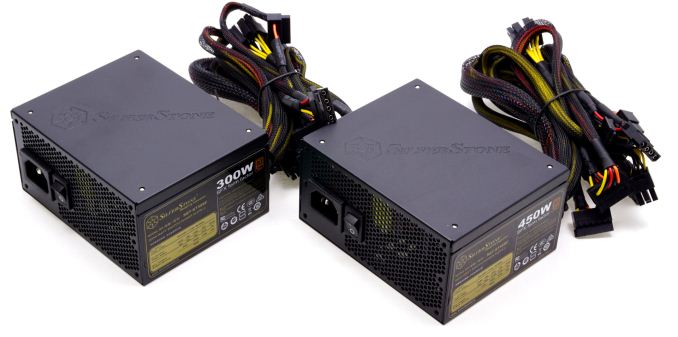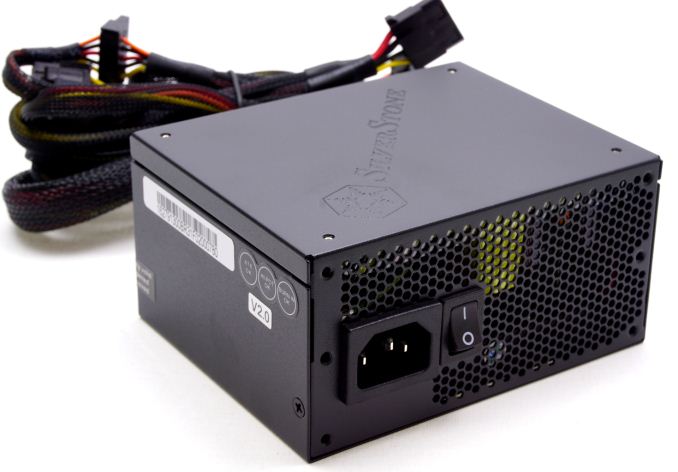The Silverstone ST30SF & ST45SF SFX Power Supply Review
by E. Fylladitakis on January 26, 2017 9:00 AM EST- Posted in
- Cases/Cooling/PSUs
- PSUs
- 80Plus Bronze
- SilverStone
- SFX
- ST30SF
- ST45SF
Conclusion
From our review of the ST30SF and the ST45SF, it is apparent that SilverStone designed these units with a very specific purpose - to market reliable SFX PSUs with good power quality at the lowest possible cost. Above all else we have to consider that we are talking about $45 (ST30SF) to $55 (ST45SF) products (after rebate) and we would find it difficult to even recommend ATX PSUs inside this price range. Finding similarly priced SFX PSUs can be a tremendous challenge, meaning that SilverStone has very little competition to worry about in this segment of the market.
We believe that, considering the design requirements and price range of the ST30SF and the ST45SF, the designer did an excellent job. Both of the units are of excellent quality, with a clean design and proven components. The power output quality is very good, with strong regulation and low noise even under very high operating temperatures. Only the energy conversion efficiency is mediocre, with both units barely suggesting that they can justify their already low 80Plus Bronze certification with an input of 110VAC, and marginally failing it with an input of 230VAC.
The compact size of the SFX units paired with the mediocre efficiency result to the undesirable situation of having high thermal losses inside a device with limited cooling capacity, i.e. to poor thermal performance. An ATX unit would have no problem dissipating these thermal losses even without larger heatsinks, by only making use of the sheer airflow that a full size 120 mm fan can provide. This is not an option with SFX units, where the space for both the heatsinks and the fan is very limited. Even the low profile 92 mm fans found in the ST30SF and the ST45SF are considered to be very large for such designs. In summary, the ST30SF and the ST45SF will be reasonably quiet while the system is idling but not when heavily loaded: if you are planning to power a powerful GPU with the ST45SF, it is very likely that it will be louder than the card itself.
In summary, the SilverStone ST30SF and the ST45SF are competitively priced SFX units, designed to offer a low-cost and yet high quality option to users that want to build low-power systems or simply do not care much about acoustics. Even though they can get significantly loud if heavily loaded, their quality and power output are excellent. With their very low retail prices, SilverStone practically has no competition, with the ST30SF and the ST45SF being virtually the only widely available choice for a high quality, low cost SFX PSU.












30 Comments
View All Comments
hasseb64 - Thursday, January 26, 2017 - link
Bronze? Wouldent installed one for free...A5 - Thursday, January 26, 2017 - link
The difference between Bronze and Titanium at 450W 100% load is 36W (roughly $38/year if you run 100% 24/7/365).Which isn't nothing, but it isn't a huge deal down in this power range.
TurboTastic - Thursday, January 26, 2017 - link
I totally would install one for free, and $45 is close enough to free to make it an easy choice!Yes, bronze is the minimum of the 80Plus certification. But it still means that it's 80Plus, which is better than a lot of the competition at this price point.
And what do you lose? 10W on standby, or 20W during the few minutes a day when you're really pushing the little Celeron kiosk you'd put this into? You could spend $90 on a Corsair SF450 Gold unit, or $160 on a Silverstone Platinum SX700. Even if those units had zero standby power consumption (they don't, the platinum still burns like 7W on standby), that $45 difference would buy like 4 years of electricity. You could run it for more than a decade on the SX700 before breaking even.
It's the right choice for the sign-in kiosk in the lobby, or a thin Word/Excel/Outlook client in the office. It's a fine choice for a NAS, or a media server in a closet. This is the right choice for the little Facebook machine you want to build for Grandma. And I depend on reviews like this from Anandtech so I can pick quality budget components for those machines! I'd probably be looking for a 300-500W ATX form factor power supply for 80% of my builds, and a small form-factor PSU like this one in this same power range for another 15%. Only a tiny fraction are the monster workstations and servers that need big, efficient power supplies.
Thanks, Fylladitakis, for another review of a typical power supply!
DanNeely - Thursday, January 26, 2017 - link
The minimum level is just 80 Plus, Bronze is the first step up above it. That said, especially at the 300W level just 80+ Bronze is better than most of what's on the market. Especially since this appears to be a modern 12V first design, vs a lot of the other junk on the market being old split rail designs.https://en.wikipedia.org/wiki/80_Plus#Efficiency_l...
80-wattHamster - Monday, January 30, 2017 - link
80+ is a certification based solely on efficiency, and has nothing to do with output quality or durability. It's true that in today's market, the marketing pull of 80+ being what it is, that a non-rated model isn't likely to be any good. But the rating by itself is nigh-meaningless in determining if a given unit is any good.romrunning - Thursday, January 26, 2017 - link
The SG05 that I bought with the 450W SFX PSU is still going strong. I really don't hear the fan in the PSU at all. It seems to be quieter than the CPU's fan in this min-ITX case.hybrid2d4x4 - Thursday, January 26, 2017 - link
Thanks for reviewing these smaller, relatively lower-power-rated PSUs!Props for the segment on "how picking an oversized PSU can lead to inferior overall performance", though I find it odd how this never gets mentioned in the reviews of idiotically oversized PSUs that are positioned at mainstream users (600-700W). These units get panned for being only bronze efficiency, but in the power draw situations of single-GPU systems, they would be a lot more efficient in the idle/light-usage state and possibly better while gaming compared to a PSU that is only at 30% load (in the case of a 700W).
StrangerGuy - Tuesday, January 31, 2017 - link
Yeah, it's really funny and idiotic with all that "ZOMG you need a 600W+ PSU or your PC will explode" PSU memes all around....For a typical gaming single GPU PC that idles ~50W and maybe touch 300W at full load where a 600W+ PSU will run so far away from the sweet spot on the efficiency curve.phexac - Thursday, January 26, 2017 - link
I generally stay away from commenting on the actual items you guys review, but I have to wonder here...how many people actually care about power supply reviews? Seems like there are plenty of other things to review out there...galta - Thursday, January 26, 2017 - link
Maybe the do not care, but they should.